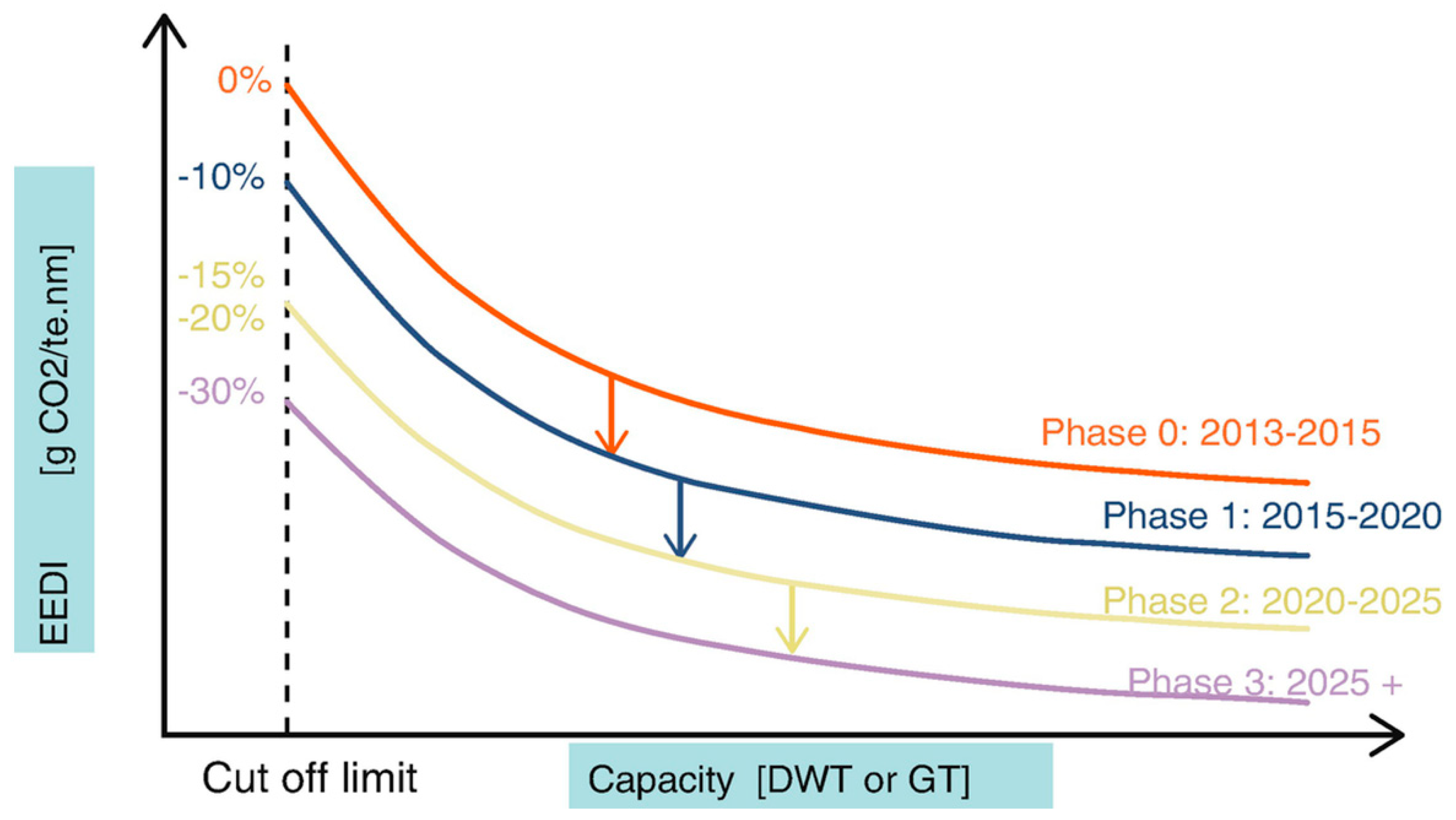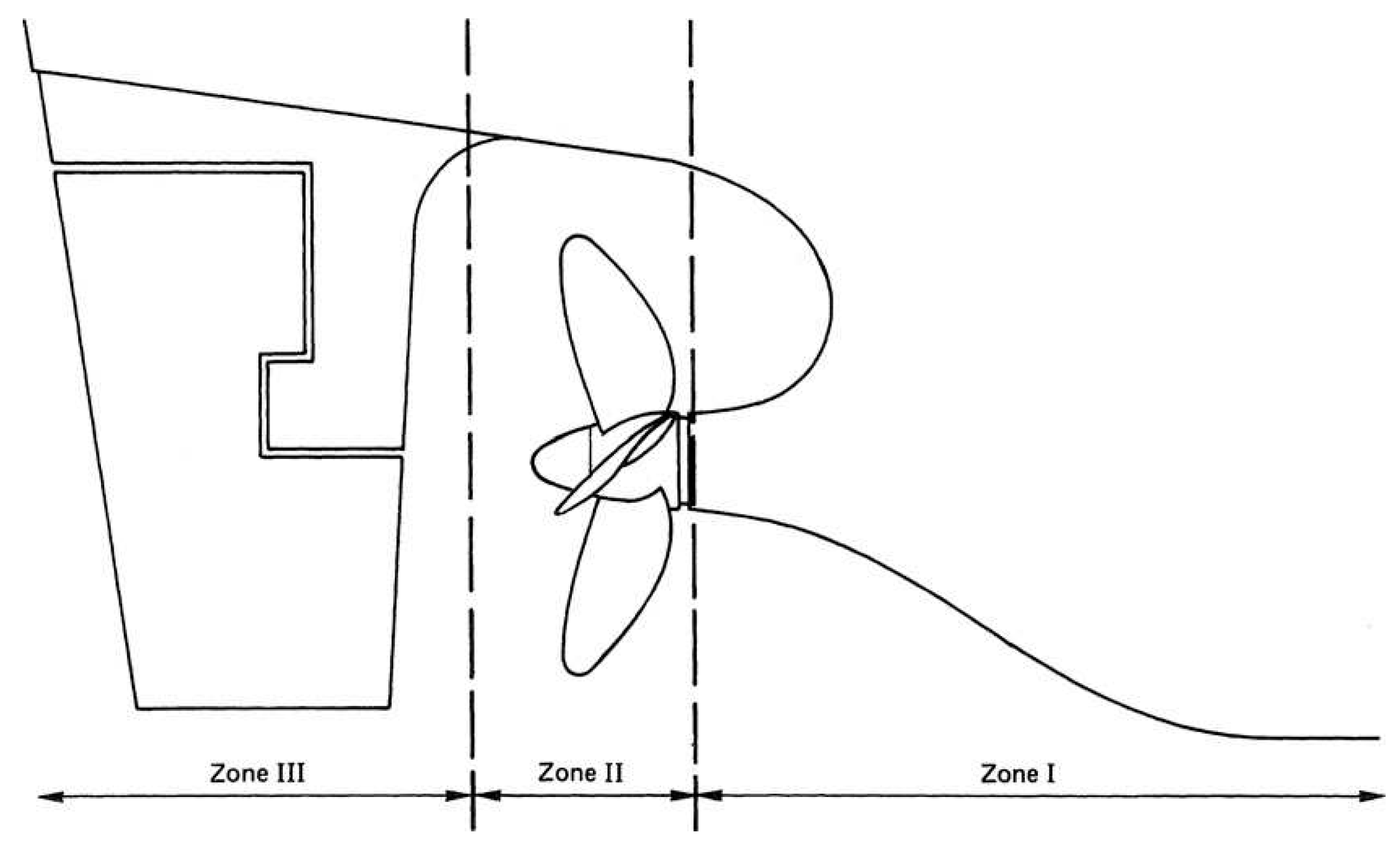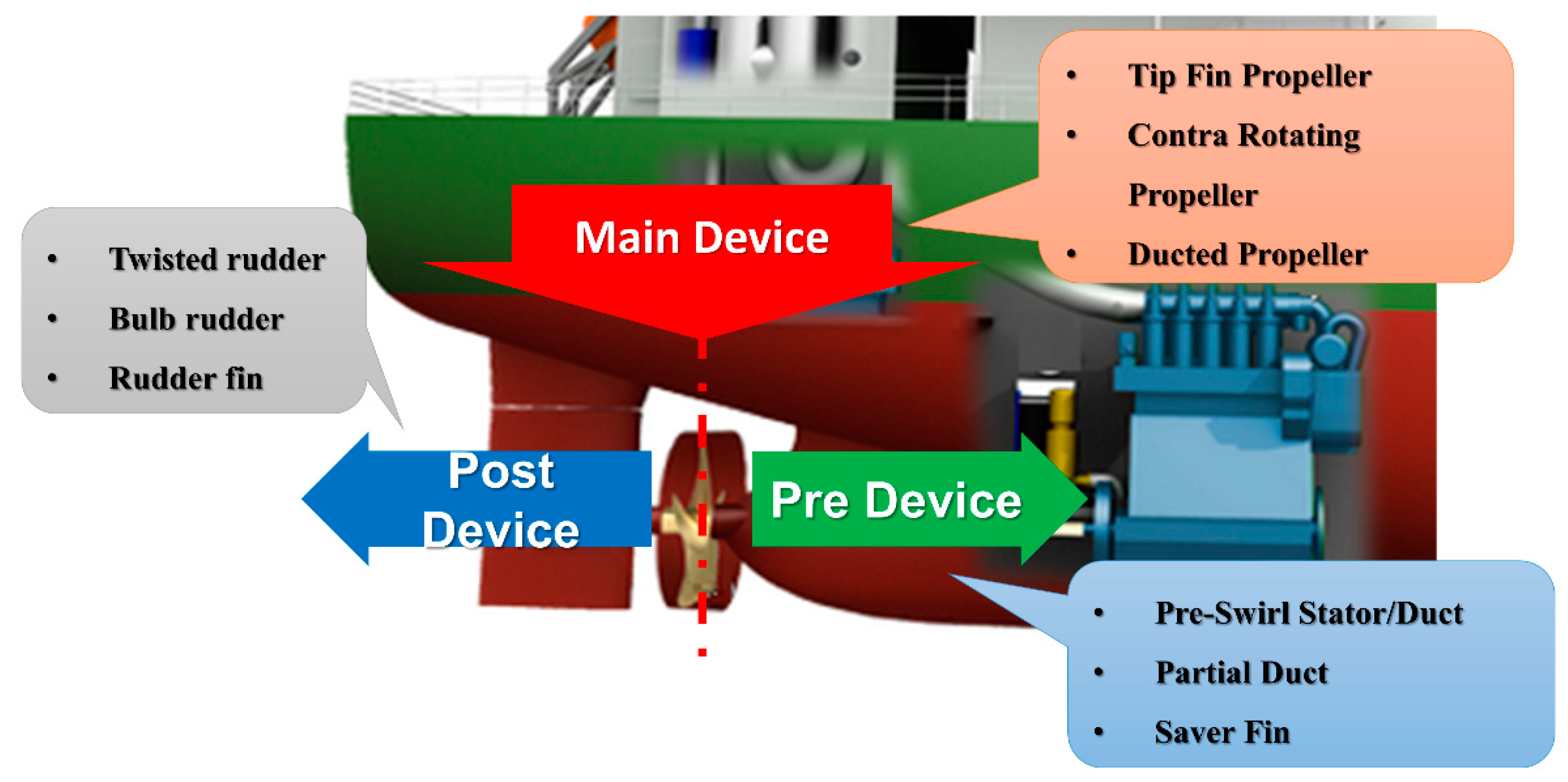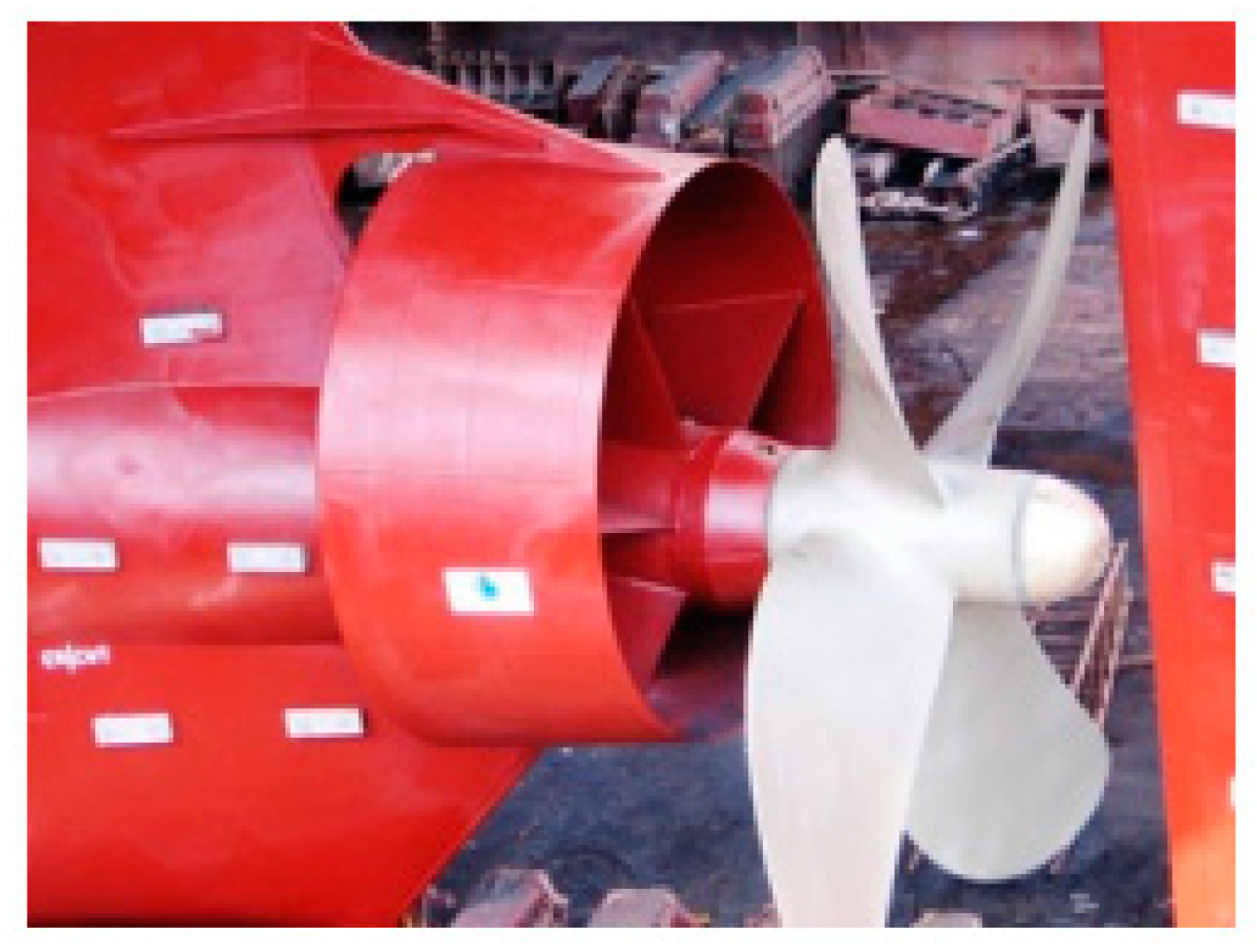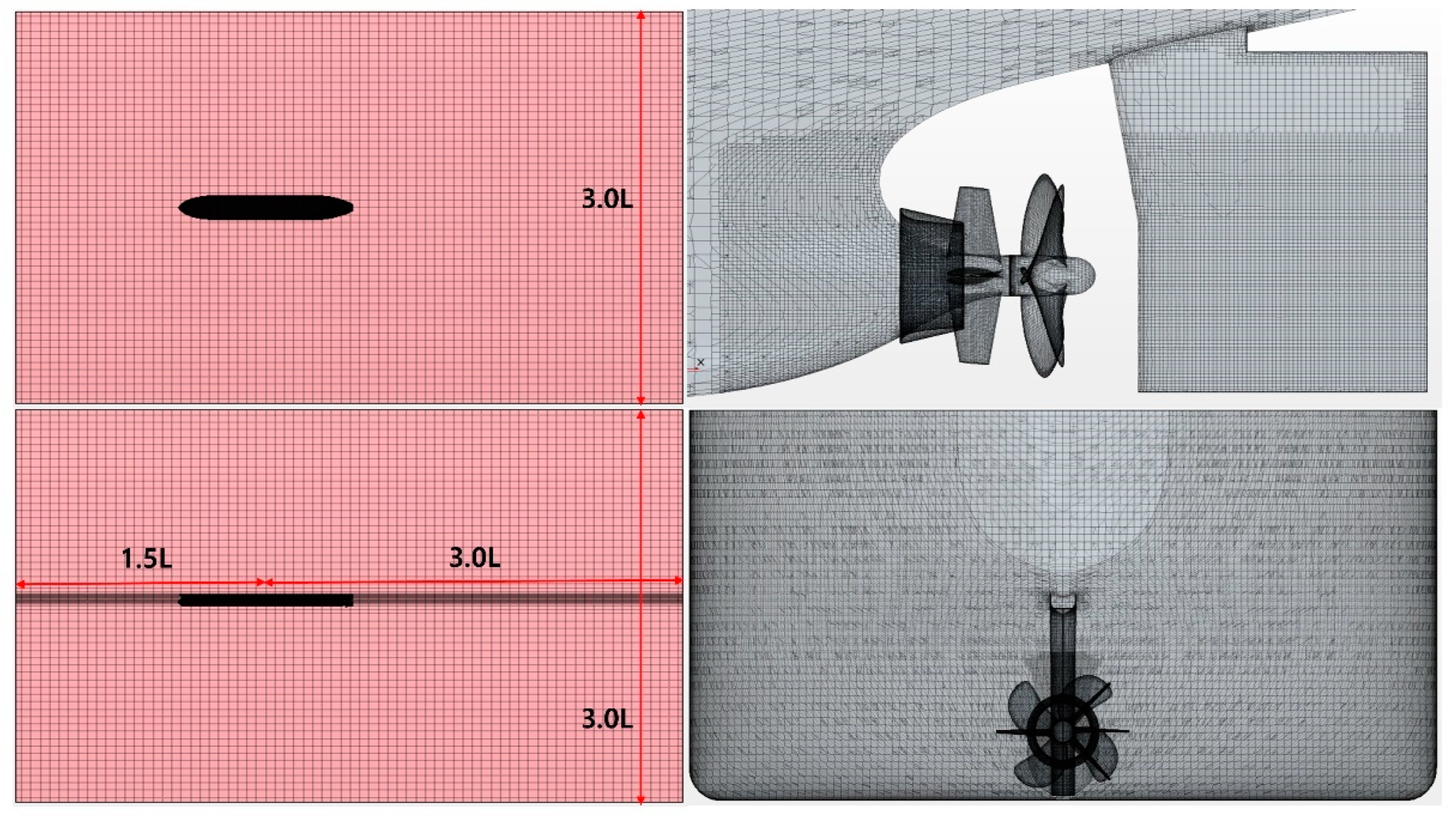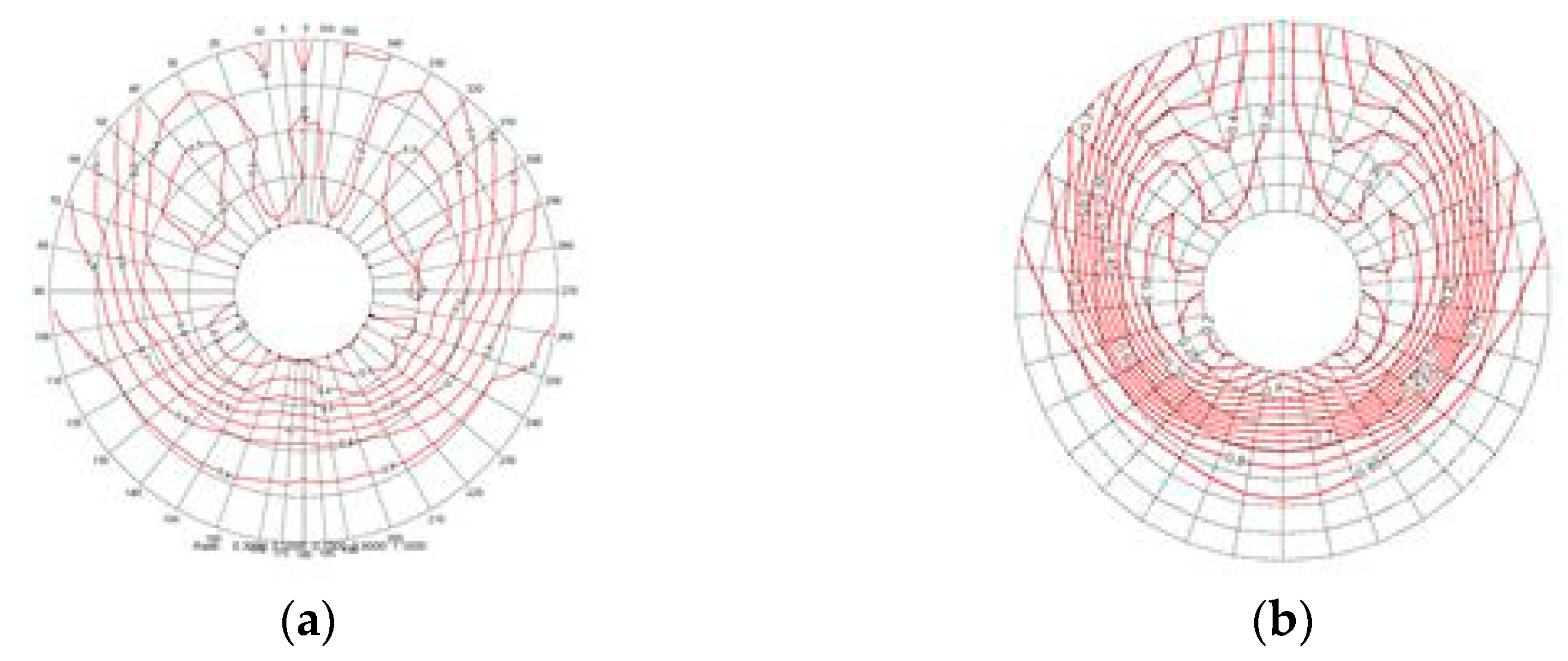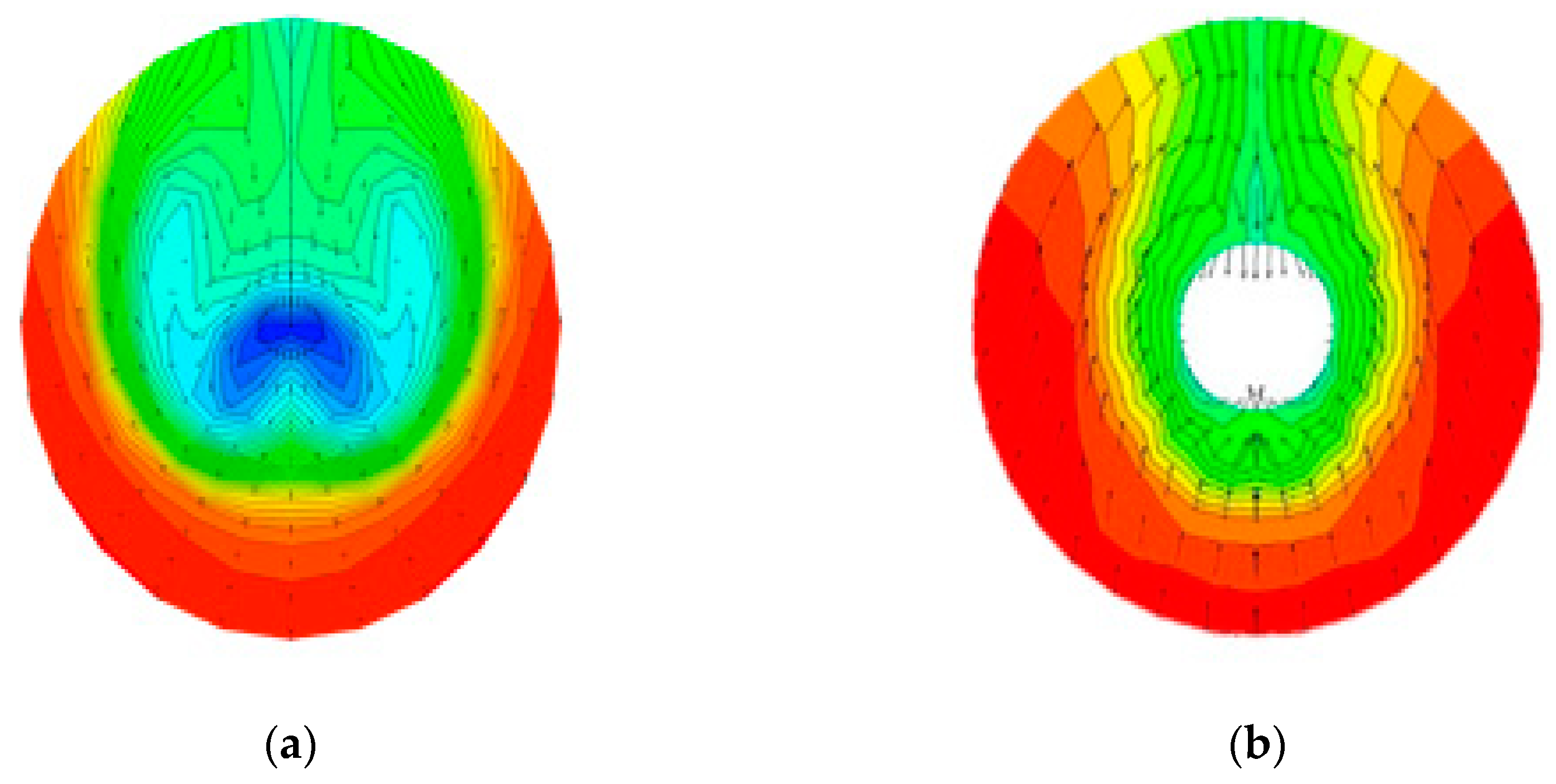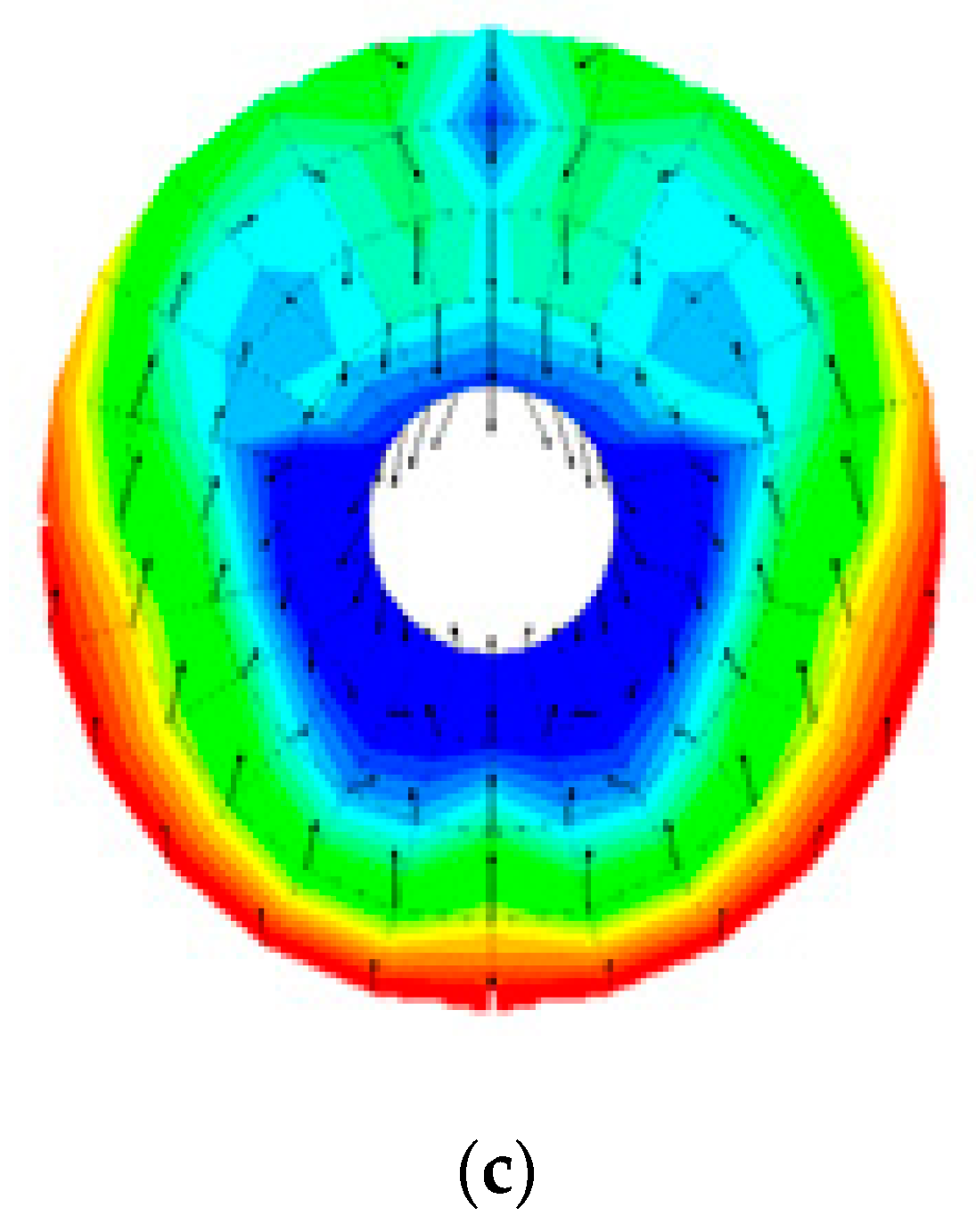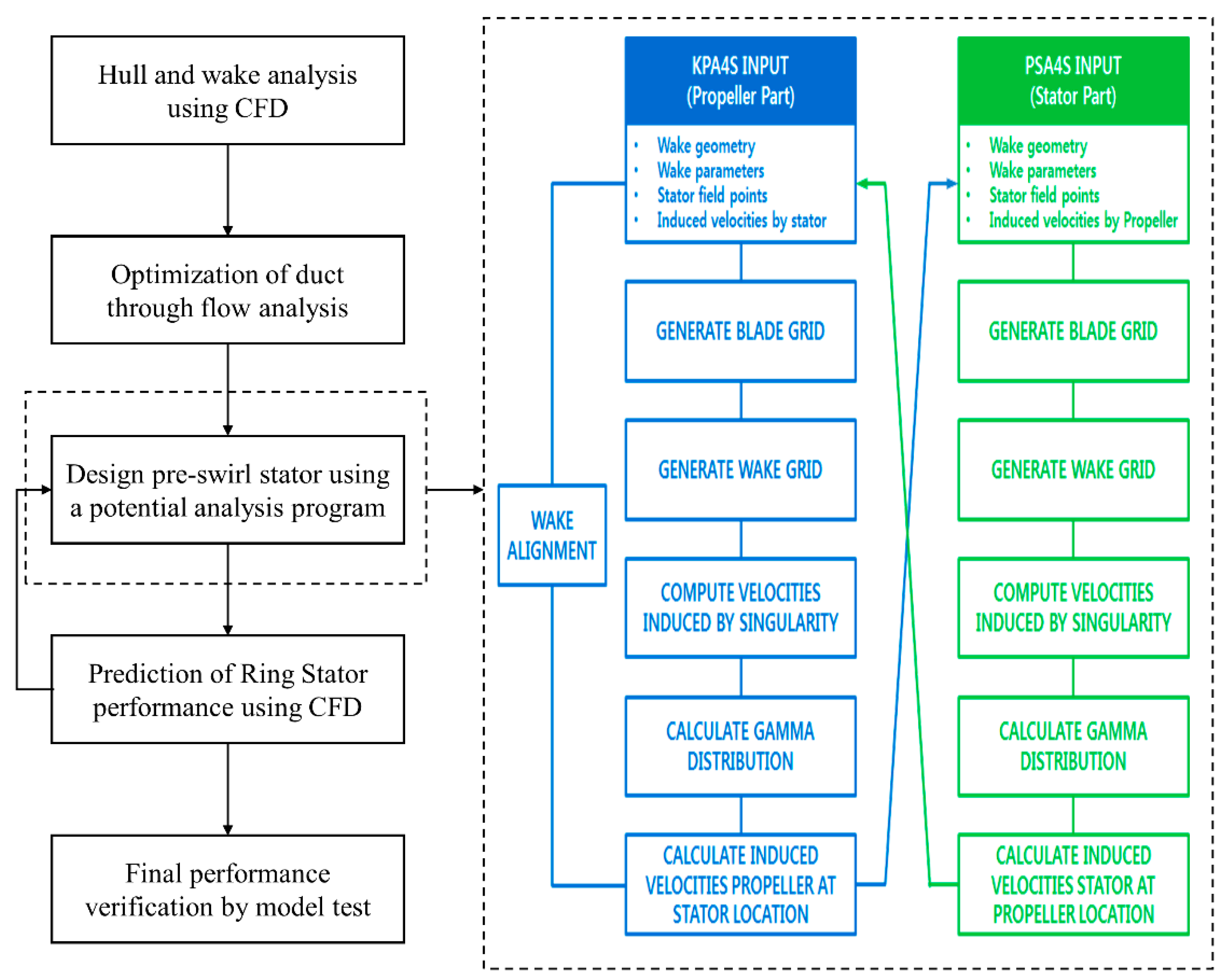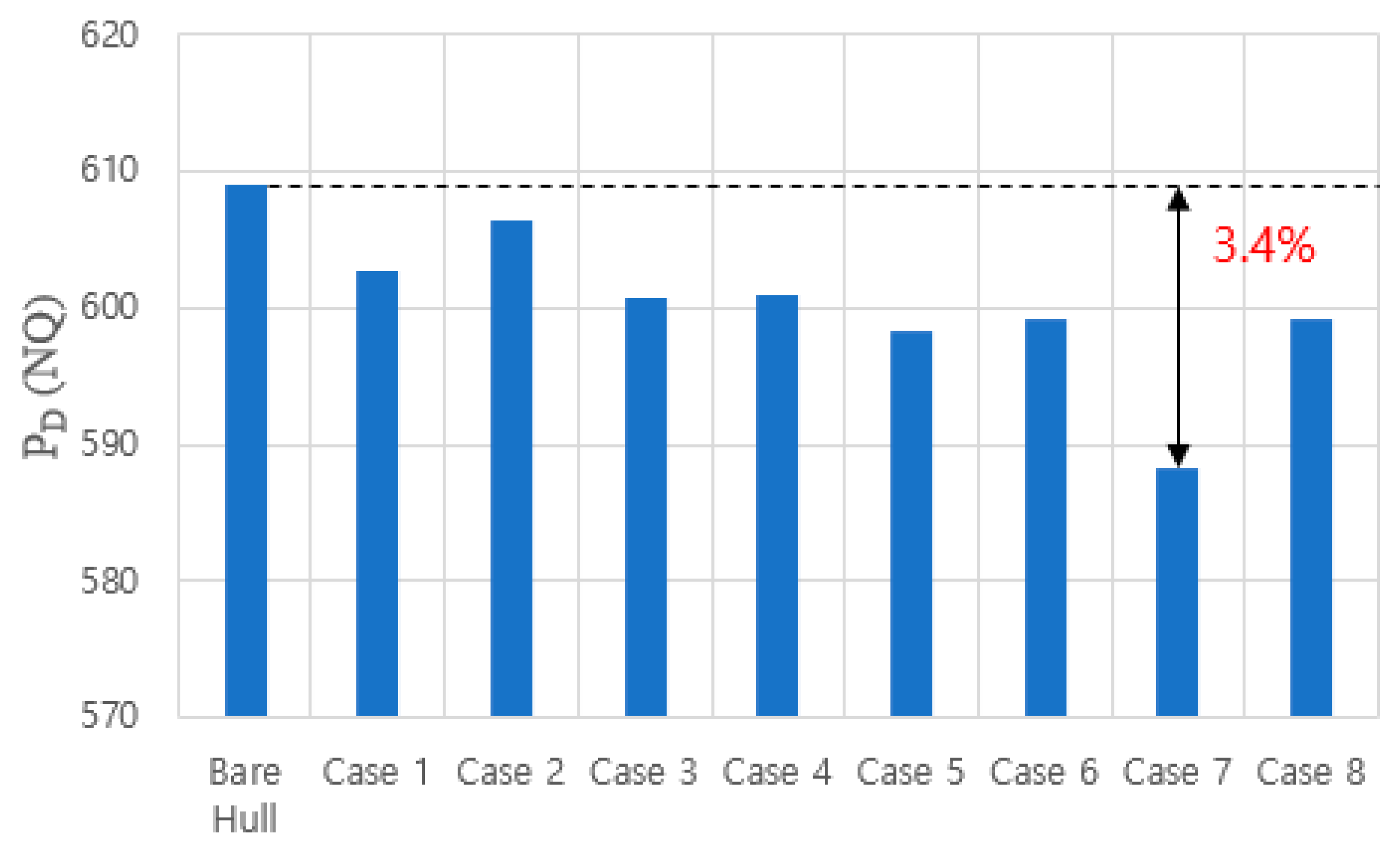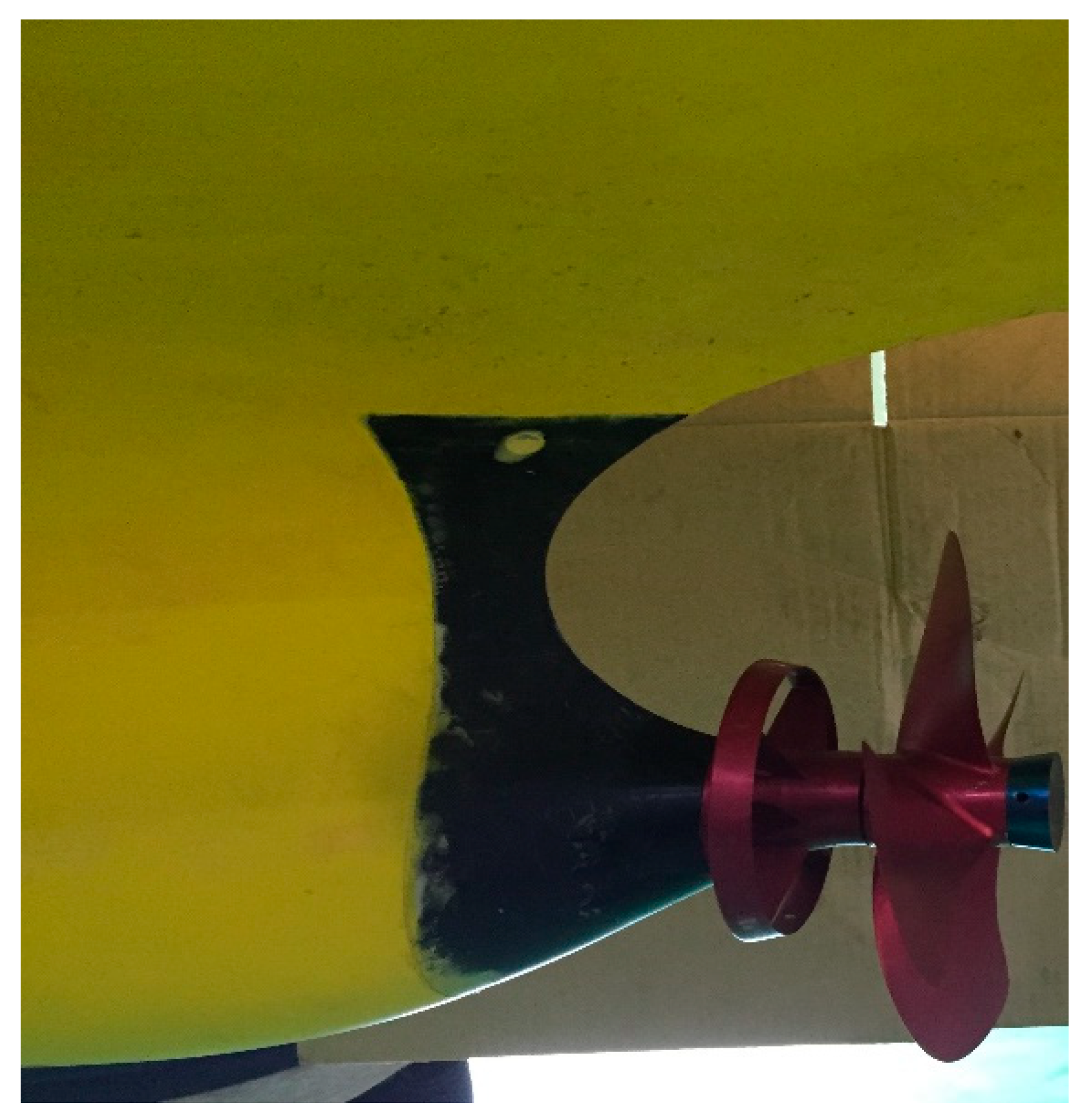1. Introduction
Interest in fossil energy depletion and global warming has increased in recent years. The International Maritime Organization (IMO) has applied the Energy Efficiency Design Index (EEDI) to ships built since 2013. The EEDI represents the amount of carbon dioxide emitted during the transportation of 1 ton of cargo per mile. Emissions should be reduced by 30% by 2025, as shown in
Figure 1 [
1], beginning with a 10% reduction in January 2013, gradually increasing to a 50% reduction compared to 2008, and eventually leading to zero emission.
However, the EEDI does not effectively assess a realistic improvement of measures for increasing the ship operating energy efficiency, as while they can be quite effective in the considered operating point for the EEDI, their performance greatly varies in the real operating conditions [
2]. For this reason, energy efficiency regulations are also being studied a lot. Ancic et al. [
2] studied improving energy efficiency regulations of bulk carriers, and Ancic et al. [
3] proposed the method determining environmental pollution from ships using the Index of Energy Efficiency and Environmental Eligibility (I4E). Following these efforts, the CO
2 emission regulation means that the Energy Efficiency eXisting ship Index (EEXI) will also be forced from 2023 [
4]. The EEXI indicates the energy efficiency of ships during the operational phase [
5]. ESDs are very effective in satisfying EEXI because it is easier to apply to existing ships.
In order to reduce the EEDI and EEXI, there are many solutions that include fuel change, renewable energy use, change of the principal dimensions of a ship, and so on. Energy-Saving Devices (ESDs) are an effective solution for decreasing the EEDI and EEXI because energy savings are simultaneously obtained without major changes to the ship dimensions or additional expenditure. There have been many developments in ESDs. Carlton [
6] categorized various ESDs into the front of the propeller (Zone I), the propeller (Zone II), and behind the propeller (Zone III), as shown in
Figure 2. Each zone is named as a pre-device, main-device, and post-device. Pre-swirl stator [
7] and pre-swirl duct (Mewis duct style) are the most famous pre-devices; the first is frequently used by Daewoo Shipbuilding & Marine Engineering Co., and recently by Samsung Heavy Industries Co., Korea, and the second one is used by Becker Marine Systems, Germany [
8]. CRP (Contra Rotating Propeller) [
9] and Tip Rake Propeller [
10] may be classified as the main device, and flexible propellers with composite materials have been actively studied not only to improve the cavitation performance but also to achieve better efficiency [
11]. The post-devices comprise a Twist Rudder, Wavy Twisted Rudder [
12], and Rudder-Bulb. The recently developed ESDs are shown in
Figure 3.
Among these ESDs, the pre-swirl stator and pre-swirl duct seem to be the most promising ones so far. Kim et al. [
7] developed an asymmetric pre-swirl stator that has better performance, efficiency, and cavitation in consideration of the upward flow of the stern body of a ship [
13,
14,
15]. Koushan et al. [
16] published a paper about the experimental and numerical study of PSS for chemical tanker, and Su et al. [
17] studied the influence of a PSS and rudder bulb system on the propulsion performance of a large-scale ship model. Recently, the structural performance of PSS is also being actively studied. Bakica et al. [
18] proposed a numerical analysis method that could predict the hydrodynamic loads and structural responses of PSS. Additionally, Vladimir et al. [
19] proposed a numerical method for the vibration analysis of PSS. This device is also applicable to Liquefied Natural Gas (LNG), container ships, and slow-speed full-body ships such as tankers and bulkers.
On the other hand, the duct propeller has been adopted for the aforementioned slow-speed full-body ships for a long time. The full duct has recently been developed to be as compact as the so-called partial duct, which includes the Sumitomo Integrated Lammeren Duct (SILD) (
https://nippon.zaidan.info/seikabutsu/1997/00834/contents/169.htm accessed 10 December 2021), among others, which is effective for the slender aft-body hull form [
20]. This partial accelerating duct, also called the wake-equalizing duct, is also used to accelerate the slow-speed region to make the wake field more homogeneous on the propeller plane. The pre-swirl duct was successfully developed by combining the asymmetric pre-swirl stator and the partial duct by the Becker Marine System [
8], as shown in
Figure 4. In addition, Bakica et al. [
21] analyzed the loading of circular ducts according to wave conditions through CFD.
Recently, the aft-body hull form, especially slow-speed full-body, has been made slender in order to decrease the resistance by delaying separation around the stern part. Accordingly, as the aft-body hull form became slenderer, the mean wake value, which is dimensionless, has been reduced to a value little less than 0.4, which is rather similar to a container ship’s wake. A more detailed description of the wake change is provided in
Section 3.
The duct propeller is difficult to apply to a fast ship because of the small radial velocity. As mentioned before, the hull form of a slow-speed ship becomes slender, and the duct should be made compact because the drag of the duct becomes high. The research objective of this study is to solve the above problems. In the present study, a new type of pre-swirl duct is proposed for a slender slow-speed full-body ship, especially for the 158 K crude oil tanker. This paper contains a numerical analysis method that combines the potential theory and CFD for compact PSD design. A parametric study of the proposed compact pre-swirl duct—the so-called ring stator—was conducted for the target ship. Regarding the choice of parameter, the diameter was first chosen because that is closely related to the wake distribution, and the duct chord that is the same as the stator tip chord is also selected because the drag is proportional to the area and also the square of speed. The final parameter is the number of blades of a stator for the present parameter optimization as well as the stator pitch angle because the stator effect is not enough due to the small diameter. A more detailed description of the present optimization is described in
Section 3 after the description of the numerical analysis in
Section 2. The results of ring stator performance improvement were validated and presented in
Section 4 through model tests at Korea Research Institute Ships and Ocean engineering (KRISO) and Pusan National University (PNU).
Regarding the scale ratio, the value of 32.8 was chosen for the validation with existing results and for the final validation test in a KRISO towing tank. A parametric study was also conducted with a scale ratio of 32.8. Due to the limitation of the PNU towing tank (L × B × D, 100 × 7 × 3.5), the scale ratio of 41.0 was used for the experiment of the final chosen design. The final test for confirmation of results has also been executed in KRISO only with the same model (λ = 41) because of budget constraints, which is a rather small model compared to the KRISO standard. In this case, the rudder has been changed for full-scale applications; therefore, an exact comparison might be limited. To determine the scale dependency, the CFD computation with the final chosen design was conducted between the scale ratios of 32.8 and 41.0 with the KRISO model test results [
22].
Accordingly, as the slow-speed ship’s stern part becomes slender, the present ring stator has been developed from an efficiency point of view because the conventional PSD is no longer effective for such kind of case. The ring stator is also expected to have some merits from an economic point of view, similar to the compact Propeller Boss Cap Fins (PBCFs) [
23], and less structural stress burden at the stern part is another merit compared to other ESD.
4. Results of Model Test and Discussion
To validate the present design experimentally, the bare hull and best case (Case 7) models were manufactured, and model tests were performed at the towing tank of Pusan National University in Korea. The specifications of the target ship and propeller are shown in
Table 11 and
Table 12, and the model ship and its appendages are shown in
Figure 14 and
Figure 15.
A comparison of the resistance test results between the bare hull and Case 7 at the design speed of 15.7knots is shown in
Table 13. The International Towing Tank Conference (ITTC) 1957 2D method [
30] was used to evaluate the performance of the full-scale resistance in order to exclude the uncertainty of form factor. It was found that as the ring acted as an accelerating duct, the Effective HorsePower (EHP) slightly decreased, even though the stator was also attached (Case 7). A comparison of the self-propulsion test results is presented in
Table 14. The ITTC 1999 method [
31] was used to estimate the full-scale performance, and as a result, an improvement of approximately 2.6% was achieved in terms of DHP. Moreover, when compared with the CFD results, the model test showed somewhat smaller results at the DHP. This difference might be owed to the Reynolds effect in the present compact device. In terms of the chord of the ring, the length is only 8.75 mm, that is, the local Reynolds number is approximately
. Although the wake region seems turbulent, there might be some laminar region that causes some separation in contrast to the fully turbulent CFD computation. A more detailed investigation is required in the near future.
To validate the scale dependency in the computation, the case of λ = 41.0 was also computed and compared with Case 7 of λ = 32.8, as shown in
Table 15. There is a slightly low efficiency gain (2.85%) in the scale factor of λ = 41.0 compared to the case of λ = 32.8.
Finally, the results of the KRISO model test were briefly introduced [
22]. As mentioned before, the large-scale case was only tested for the final verification of the developed PSD. For the application of an actual full-scale ship, a bulb-type rudder was applied instead of a conventional rudder. The efficiency gain was 3.4%, which is higher than that of 2.6% in the PNU towing tank. The rudder bulb’s effect is normally at most 1–2%. Considering the bulb effect, the gain might be around 3%, which is a reasonable value between the CFD computation and model test results at the PNU.
5. Conclusions
In the present study, a new type of PSD—the so-called ring stator—was proposed for a 158 K crude oil carrier. The ring stator was designed to adapt to the wake of the propeller plane. In the case of the target ship, the stern is rather slender, even though it is a low-speed full-body ship. Therefore, in order to prevent excessive drag increase due to additives, the design was made compact so as to minimize the diameter of the ring stator and the length of the chord at the tip of the blades. A parametric study was conducted to determine the dependence of efficiency according to variations in geometry, and its performance was validated using CFD and model tests.
A parametric study was conducted by selecting the diameter, the number of blades, the taper, and the pitch angle of the stator and chord of the duct as design variables for the ring stator. The most important parameter for the present compact ring stator is diameter, which is decided based on the wake distribution. The optimally decided value of diameter is half of the propeller diameter. The duct chord that is the same as the stator tip is selected as 10% of normal PSD for the minimum drag. In the case of the number of stator blades, six is chosen to cancel out the hub vortex energy enough because the flow energy is concentrated at the center of the propeller owing to the slender hull form. Regarding the pitch angle of the stator, it is similar to the existed other stator cases.
Finally, an increase of approximately 3% (Case 7) in propulsion efficiency, compared to that without the device, was obtained by applying the best choice through CFD and validated by a model test. A comparison of the model power of 2πnQ between the model test and CFD was performed. To compare the model test results more precisely, a computation with the same scale as the model test was conducted, and the computed efficiency gain was 2.9%, which is slightly lower than that with a small-scale ratio. Finally, a 2.6% efficiency gain at the full-scale performance was obtained based on extrapolation with the model test.
There might still be room for improvement, such as in terms of the optimum attachment position of the ring stator, etc., and, regarding the full-scale performance, it is necessary to continue further research, including the performance of full-scale computation.
